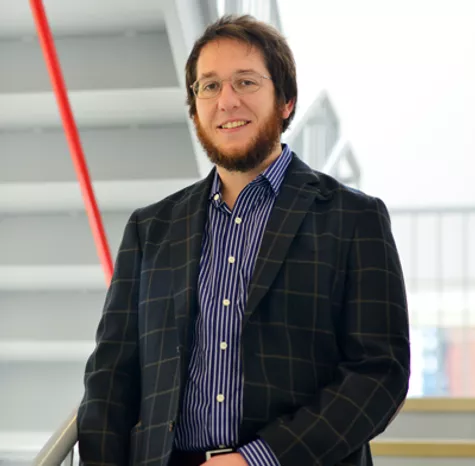News Story
UMD Research Lab Receives ARO Grant to Investigate Reconfigurable Nanoparticle Assemblies

A research team in the Department of Chemical and Biomolecular Engineering (ChBE) at the University of Maryland (UMD) recently received $430K in funding, over a three year period, from the U.S. Army Research Office (ARO) Chemical Sciences Division to study the fundamental nanoscale chemical and physical processes involved in dissipative self-assembly of nanoparticles.
The project, led by ChBE Assistant Professor, Taylor Woehl, will focus on the development of models and systematic experiments to describe the nanoscale chemical and physical processes that facilitate self-assembly, a process by which disorganized particles spontaneously arrange themselves into well-organized patterns. The model will be used to enable discovery of new synthetic nanoparticle assembly systems that utilize chemical reactions between polymers and small molecules, and chemical fuels to form reconfigurable nanomaterials.
Nanoparticles, over 1000 times smaller than a human hair, can be combined into larger, macroscopic materials that have extraordinary catalytical, optical and mechanical properties otherwise unachievable by bulk materials - self-assembly is commonly utilized to create these materials. While nanoscientists continue to excel at arranging nanoparticles into intricate patterns using self-assembly, these structures are essentially trapped in a single arrangement with a single function. Emerging applications in the areas of catalysis, biosensing and optical materials would greatly benefit from multifunctional nanomaterials that can be reconfigured over time.
"Imagine a material system that acts as a passive biosensor and supplies its own power by temporarily transforming into an energy collection device," said Woehl. "Such systems are of great interest to the Army because they're autonomous and don't require active maintenance or intervention. Comparatively speaking, conventional self-assembly methods cannot control the lifetime of materials, so new approaches are needed."
Biological systems, like cells, have evolved to perform these type of functions. Processes like cargo transport in cells and cell division utilize a process called dissipative assembly, where proteins in the cell temporarily assemble into nanostructures called microtubules in response to certain stimuli. After the microtubules complete their task they disassemble. Despite the frequency of dissipative assembly processes in natural biological systems, relatively few synthetic dissipative assembly processes have been discovered.
This grant will explore open challenges of dissipative assembly, including establishing design rules for rational design and accelerating discovery of new dissipative assembly systems. The Woehl lab will apply their expertise in in situ electron microscopy and colloidal scale modeling to directly visualize and develop mechanisms for dissipative assembly of nanoparticles and colloids.
Published May 26, 2020









